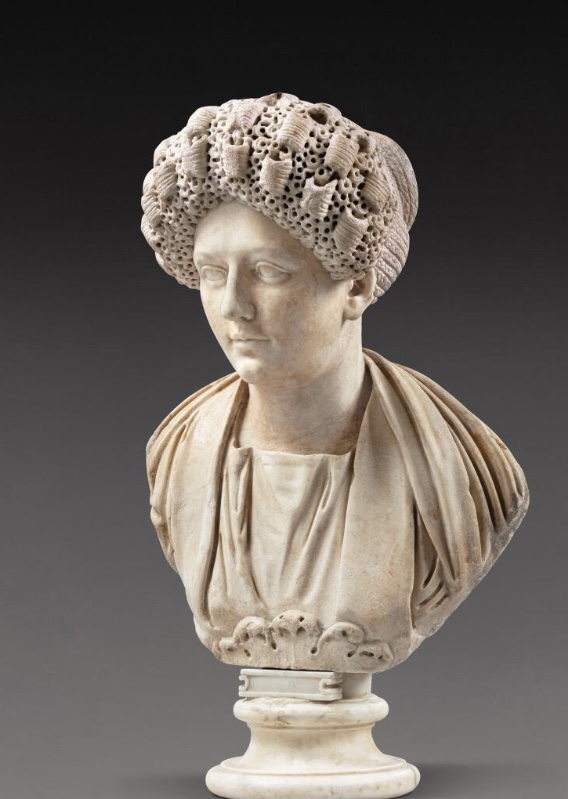Roman marble portrait of a bust of a woman from the Flavian period (circa 80–100 AD). It showcases a high level of craftsmanship, typical of the era, with intricate details such as the calyx of acanthus leaves from which the bust emerges, her elaborately styled hair, and her attire, consisting of a tunic and mantle.
Here’s a breakdown of the notable features:
Calyx of Acanthus Leaves: The bust is emerging from a floral design, commonly found in Roman and Greek art, symbolizing immortality or eternal life.
Hair Style: Her hair is styled in broad curls, adorned with tubular ornaments, which were often made of gold or other precious materials. The two echeloned rows of ornaments and the coiled braids formed into a turban-like arrangement behind the head indicate a sophisticated and possibly aristocratic or imperial hairstyle of the time.
Tunic and Mantle: Typical Roman clothing, the tunic was worn by both men and women, while the mantle (cloak) was often a mark of status and style in Roman society.
Sculptural Technique: The drilled curls and the highly detailed hair suggest the use of specialized tools and techniques by Roman sculptors to achieve such intricate work.
Total Height: With the socle (base), the total height of the bust is 63.5 cm, which suggests it was likely a decorative or commemorative piece, possibly for a wealthy patron or as a funerary monument.
No comments yet.








